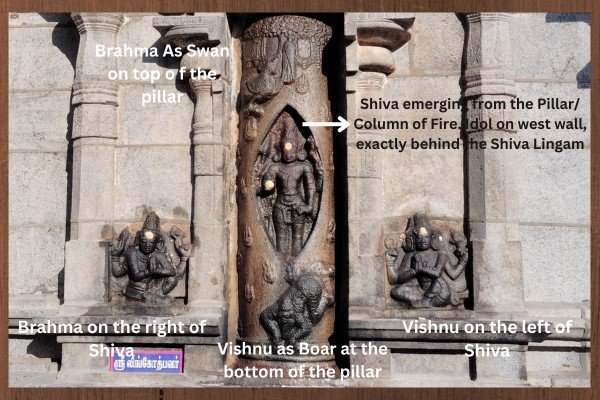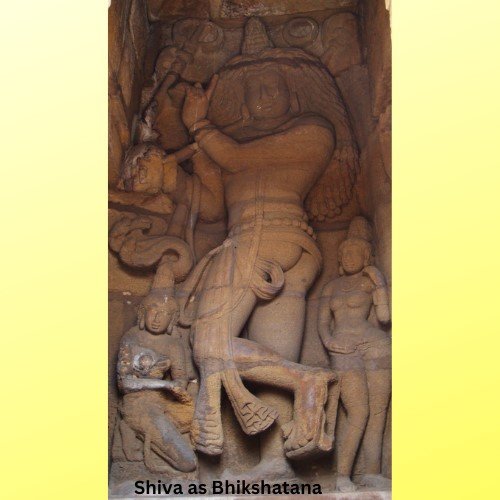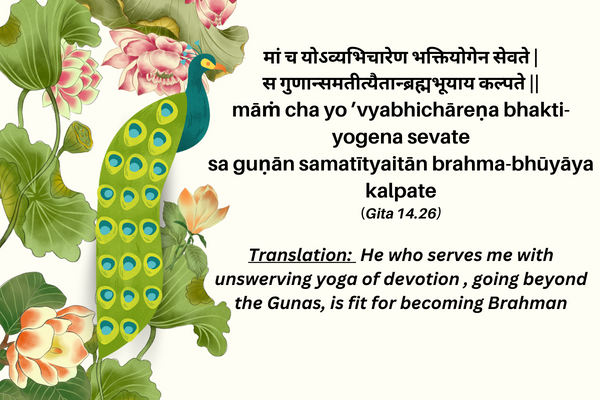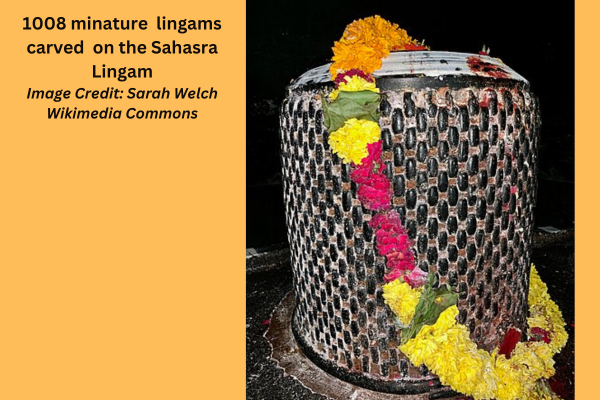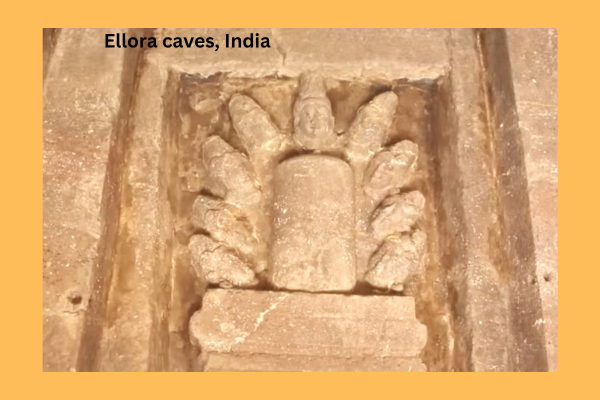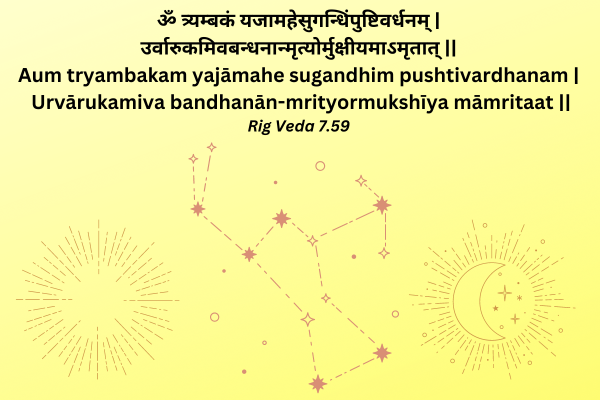Shiva Lingam – in this final part, we discuss about Pillar or Column of Fire – “Lingodbhava” Iconography, Understanding 330 million Gods, Sahasra Lingam & 33 Main Gods, Is Shiva Lingam mentioned in Vedas? (Special reference to Skambha or Cosmic Pillar in Atharva Veda), Understanding the error made while chanting the famous Mahamrityunjaya Mantra & Shiva Lingam as commonly understood as the symbol of the sexual union between Man & Woman.
Pillar or Column of Fire - “Lingodbhava” Iconography:
The story of the Column of Fire is mentioned in Shiva Purana, where Vishnu & Brahma were involved in a battle to prove who is superior. The fight takes an ugly turn as they hurled fiery weapons at each other and almost came to destroying the three worlds. Shiva on seeing this imminent destruction, took the form of a Column of Fire amidst Brahma & Vishnu and their weapons fell into it. Both Brahma & Vishnu were amazed to see this and decided to find out where top & bottom of this column of fire are located. Brahma took the form of a Swan and flew upwards and Vishnu took the form of a Boar and went downwards.
Later Vishnu declared that He could not find out the source, but Brahma lied that He had found the top of the Column of Fire. This lie of Brahma prompted Shiva to emerge from Column of Fire (as shown in the Lingodbhva image below – a very common image found in South Indian Shiva Temples) to censure Brahma and decapitate his fifth head. Shiva was happy for Vishnu as he was truthful and said that he will be respected & honoured by the people at par with himself from now on. The images of Brahma & Vishnu can be seen at the bottom of the image, with both paying their due respects to Shiva. By cutting of the head of Brahma, Shiva himself had committed a sin and therefore he had to roam the three worlds as Bhikshatana (Shiva as a naked beggar – image shown below).
Puranas are full of such stories of Gods & Goddesses. Many stories are usually concocted, blown out of proportion and sound farcical or downright ridiculous. So they cannot be taken in a literal sense and there is need to understand their allegorical significance and meaning of the above story is given below:
- Shiva is the Infinite Reality or the Supreme Consciousness. He has no beginning or end just like the Pillar/Column of Fire mentioned in the story above. It is out of our ignorance, delusion & desire that we try and use “Finite” means (senses) to understand the “Infinite”.
- Brahma portion of the Shiva Linga represents “Sattva Guna” & the Vishnu portion of the Shiva Linga represents “Rajasic Guna”. Even Sattva Guna will not take us to Supreme Reality. This means we have to transcend all the three Gunas (Sattva, Rajas & Tamas) and rise above the material nature of these Gunas, through meditation. (The three Gunas will disappear when divine light appears, as aptly stated in Bhagavad Gita 14.26, reproduced below).
- There is no beginning or end to the Pillar of Fire, as neither Brahma nor Vishnu could not locate both ends of the Pillar. Similarly, “Time” has no beginning or end. Therefore, Shiva is also called “Mahākāl” or Mahā meaning Great and Kāl meaning Time, which means the one who has transcended time, one who is beyond birth & death!
This story in the Puranas, thus depicts the age old cult worship of Pillars with Shiva emerging from this Lingam (Pillar). (Pillar worship at Gobekli Tepe, Turkey is one such example of ancient pillar worship). Shiva has thus been identified with Pillar or Column worship. Shaivites (followers of Shiva) perhaps took this concept forward and the Shiva Lingam was designed accordingly.
330 million Gods - Sahasra Lingam:
Introduction:
Do Hindus worship 330 million Gods? Is this even possible in a man’s lifetime? The followers of Sanatana Dharma are often confused when asked how they can possibly worship 330 million Gods!
As stated in my earlier blog on Purusha Suktam (<click here for more information if required), the Universe emerged from “grhta” often translated as mixture of curd & ghee and in modern cosmology is known as “hot ionized plasma”, which our Rishis (sages) visualized as a pillar (shaft) that consisted of pure, formless energy. Our scriptures (esp. Linga Purana) say that the all forms in the universe originated from this pillar of energy that was present before formation of the universe or Big Bang. After the Big Bang all the energy particles emerged from this pillar, thus creating matter! This pillar is considered as the Shiva Linga, a symbol of supreme consciousness. Therefore, in the construction of Temples/ Devotional spaces as per Agama Sahstra, the base (smallest) unit of measurement is called “Paramanu” which is means a minute atomic energy particle or subatomic particle.
Sahasra Lingam:
In Vedas (example: Purusha Suktam Hymn), the word Sahasra means a thousand and is symbolically conveyed to mean infinity or alternatively the millions of energy particles that came out during the Creation of the Universe from the Shiva Lingam – the pillar of pure & formless energy. This in turn, created the building blocks of mass or matter which covered space over a period of time! Creation is therefore formation of energy, mass (matter), space & time. Each energy particle that created this Universe is viewed as Divine (God) and this is the true meaning of 330 million Gods. (The figure 33 may have come from the 33 Devas or Gods mentioned in Atharva Veda which is discussed in the section below).
The above concept of millions of energy particles is depicted today, with thousands of Lingams sculpted on river beds & on huge Shiva Lingams. Some examples with photos given below are: 1) “1008 Sahasra Lingam Idol” in Telangana, India 2) Thousands of Lingams carved on a river bed in Kbal Spean, Cambodia 3) Nine heads of Shiva emerging from a Lingam at Ellora Caves, India. These are the symbolic representations of the energy particles emerging in the form of Shiva Lingas! When they are carved on a river bed, the water flowing over them symbolically represents “Hot Ionized plasma” or “Grtha” that created matter! Life on earth thus emerged from an aqueous environment!
33 Main Gods of Hinduism:
Brhad-ārayanka Upanishad Verse 3.9.2 states there are 33 Gods. There may be many Gods, but all of them are mere manifestations of the ONE BRAHMAN. These 33 Gods are: 8 Vasus, 11 Rudras, 12 Adityas which makes it 31 and together with Indra & Prajapati, there are a total of 33 Gods that were described during the Vedic Era. Verses 3 to 6 from Brhad-ārayanka Upanishad are further explained below:
Verse 3.9.3 describes the 8 Vasus. They are Fire, earth, air, sky, sun, heaven, moon & stars. Vasus are essentially elements of nature that support life and also each other and hence treated as Gods. As an example, Moon gets light from the Sun to support life. It shines and impacts life on earth in terms of time, tides & light energy.
Verse 3.9.4 describes the 11 Rudras. These are the 10 Indriyas and the Mind. The 10 Indriyas (senses) are: Five Sense Organs (Jnanendriyas): Ears, Eyes, Nose, Mouth/Tongue & Skin. Five Objects of Action (Karmendriyas): Speech, Hands, Feet, Organ of Excretion (Anus) & Organ of Procreation (Genitals), sometimes given the name 10 breaths! Rud means “tear” in Sanskrit and if any harm that comes to these 10 Indriyas, it causes grief and we weep. Rudra who is associated with Shiva is therefore called upon when we need safety & well-being! Mind is the eleventh Rudra, as it has to be strong and under control to counter this grief, if required.
Verse 3.9.5 describes the 12 Adityas. These are the 12 months of a year and indicates Time. Adityas take everyone along just like Time does! Time is also a healer! Aditya is also the Sun or Surya, the giver of life energy. Adityas are also known as Sun-Gods who are 12 in number.
Verse 3.9.6 describes Indra & Prajapati: Indra is the Lord of all Gods. He is the cloud breaker & giver of rain, signifying universal energy. Also known as the God of Thunder & Lightning. Prajapati is Sacrifice or Yajna & the Lord of all Beings. Every being on earth makes a sacrifice for others whether he is aware of it or not. Plants give us oxygen to breathe. Man can provide positive energy, kindness & compassion to people all around him. His sacrifice is Yajna and he is Prajapati – Lord of Beings!
It is clear from the above Verses that during the Pre-Vedic period & Vedic period, man clearly understood the relationship between himself & nature (Universe). He also understood the elements that are both vital to himself and the Universe and gave them the stature of Gods! He knew that Nature or the Universe can be both kind & fierce and respected it accordingly.
Is Shiva Lingam mentioned in Vedas?
During the pre-Vedic & Vedic period, the concept of Yajna was very important (and continues to be so), as Agni (Fire) was the primary messenger of the Gods and a carrier of oblations! Eight out of ten mandalas or chapters of Rig Veda (oldest of the four Vedas) are dedicated to Lord Agni. The concept of Brahma, Vishnu & Shiva with their consorts Saraswati, Lakshmi & Parvati respectively, came much later. The words Shiva or Lingam are not found in the Vedas.
However, RUDRA is mentioned in three complete hymns of Rig Veda 1.114, 2.33, & 7.46. Then there are two more hymns are devoted to Rudra together with Soma in Rig Veda 1.43 & 6.74. Rudra is usually viewed as the fierce form of Shiva and makes you weep (tears). (Verse 3.9.4 mentioned under the above section “Sahasra Lingam” describes the 11 Rudras. Rudra is usually identified along-with Maruts, Vedic Gods of Storms. Maruts are considered wind energy moving along the invincible SUN and also travel to the sun from earth & back). Aksha means Eye. Rudraksha means tears of Lord Shiva and it is a fruit from the Rudrakhsa tree which is used as prayer beads and also worn usually by ascetics.
Hymn 10.7 of Atharva Veda on “Skambha or Cosmic Pillar”:
Kanda 10 Sukta 7 consists of 44 Hymns out of which 41 are dedicated to Skambha – The Cosmic Pillar which holds, supports & controls the Universe in order to sustain its form, fit & function. As a metaphor Skambha is described as Purusha – The Cosmic Man whose body is the Universe and each of his body parts have their place & function! (Pls. refer my 3 part blog series on Purusha Suktam for more information). Man & the Cosmos are not different from each other. Both have something in common which is dimensionless, which is the Supreme Brahman, known here as “Skambha – the Cosmic Pillar or Support”.
This Hymn starts with various questions on the nature of Skambha. In what part of Skambha does Tapas (fervor or passion) & Rtam (Truth & Law) abide? In which part of it does fire burn, wind blow, waters flow, moon traverse, earth & sky & heavens abide? Why do the stars, planets & galaxies keep turning around and what are they trying to achieve? Where do days, months, years & seasons proceed? Tell me of the father of creation, Prajapati, the one who sustains this creation?
Skambha & Prajapati are the same. Prajapati is the creator and Skambha the sustainer. How much of the created world did Skambha pervade? Into whose limb are the 33 Gods integrated? In whom do the first born Rishis reside together with Rks, Samans, Yajus & Atharva Vedas? Both Death & Deathlessness abide in Purusha, whose arteries are the seas, of that Skambha, who is he? Those who know the Divine, know it as the Supreme Brahman, the immanent (inherent) Purusha, also known as the creator Prajapati and thus they also know of Skambha, as the support. Why do the winds, waters & mind never come to a standstill? In subsequent Hymns the answers come forth as given below:
Some think the primordial Prakriti is the Supreme Reality. Others think the manifested & ever changing world is Reality, but both don’t know Skambha. Devas who were born of primordial Prakriti say the Prakriti is only one limb (Ekaṁ tadaṅgaṁ = single limb) of Skambha. (This one limb of Skambha is sometimes interpreted as Lingam). Primordial Prakriti is beyond Devas and Skambha beyond Prakriti. When Skambha creates this new world of existence (which is only one limb of Skambha), it is only repeating the old version of creation!
It is Skambha alone that that created 33 Gods, created Prakriti which in turn formed the golden design of this Universe (Hiranyagarbha – Golden Womb of Creation, later known as the Golden Egg or Seed of creation), that jump started the evolution of this world. Tapas (fervor or heat) & Rtam (Law & Order) along-with the worlds of this Universe abide in Lord Indra. The verses that follow describe the various body parts of Skambha just like the Purusha Suktams describe Purusha’s body parts and equate it to the various elements of this world. (for example; Spaces, sun, moon, Agni, Prana & Apana – Vayus, light, heaven, earth, 6 directions of space, Soma etc.)
Skambha is dynamic and always moving in the midst of the Universe and never at rest. Therefore, the divine forces of nature associated with Skambha are also dynamic, and move just like the branches of the Cosmic Tree. (Skambha is compared to the tree trunk and forces of nature to the branches of that tree). Similarly, the forces like the winds, waters & mind always move and vibrate & flow. The word used for waters or the primordial fluid (Grtha) here is “SALILA” which portrays a secret & intimate connection between the Cosmos & Spiritual elements. Verse 40 & 41 of Skambha Suktam, explains that all the THREE lights (perhaps referring to the earth, firmament & heaven or perhaps fire, sun & moon) abide in Prajapati (who is Yajna as stated in Brhad-ārayanka Upanishad verse 3.9.6 above). The one who pervades the golden fabric/substratum of this universe and existing in SALILA (primordial waters) is mysterious Prajapati. (The last few Hymns 42-44 do not mention Skambha and is a departure from this main theme)
In summary, Mount Sumeru is known by many names in various cultures; Mount Meru, World Axis, Axis Mundi, Cosmic Pillar, World Tree (In Vedic cosmology it is the Jambu Tree). Vedic sages in ancient times, wrote Hymns in Rig Veda about this Pillar which was imagined in “poetic form” as 1) Purusha – the Cosmic Man (Purusha Suktam Hymn) 2) Skambha that connects, holds & supports this Universe (Skambha Suktam Hymn). Both are described metaphorically as a person with body parts. In essence, both of them are the same PURE BEING – the Supreme Brahman – The Cosmic Spirit!
(Please note Vedas are very difficult to translate. Each Word carries many meanings and they may not mean what they appear to mean. We can perhaps only grasp the superficial essence of what the Rishis had actually intended to convey)
Understanding the error made while chanting the famous Mahamrityunjaya Mantra.
Translation: I worship the creator & protector of the three worlds (Rudra), who is fragrant and nourishes all living beings. May he sever my bondage with samsara or mortality (cycle of birth & death) and release me into my immortal self.
Comments:
This is the 12th and last mantra of Rig Veda Mandala 7 Sukta 59 addressed to Maruts & Rudra Devata by Vasishtha Maitravaruni Rishi. (Please refer the previous section in this blog “Is Shiva Lingam mentioned in Vedas” for the details on Maruts & Rudra). This mantra is also known as Rudra Mantra. Post-Vedic times, Rudra came to be known as Shiva!
“māmritāt”, the last word of the mantra, consists of two words Maa + Amritat. Maa means “my or me” (pronoun) and amritat means “immortal or deathless or eternal”. Mritāt is opposite of amritāt meaning mortal or perishable. By chanting “ma-mrtat”, we are asking for bondage rather than liberation or immortality! So the correct way to end the chant is mā-amritāt and not ma-mritat. I am in essence asking that in death, to help me sever (cut off) my bondage with the repetitive cycle of birth & death and merge into my Immortal self (mā-amritāt) – Supreme Brahman, just like a cucumber when it is ripe, detaches itself from the stem of the creeper smoothly & without effort, this liberating itself from bondage.
Shiva Linga as the symbolic union between Man & Woman:
The worship of Shiva Linga has popularly been referred as a “Phallus worship”, inviting ridicule. What started as Pillar worship may have taken a different meaning altogether over a period of time, when the actual significance of what the Pillar meant, was lost. Man usually thinks in terrestrial terms, based on what his senses convey. The trinity of Brahma, Vishnu & Shiva represents Creation, Maintenance & Destruction. When there is creation, there is destruction and destruction leads to creation as well. Therefore both are entwined and not separate from each other. Since destruction eventually leads to creation, it is possible that Shiva Lingam started to be viewed only as organ of procreation.
This particular interpretation of the Shiva Lingam as the symbol of sexual union between man & woman became accepted after the Kamasutra text was written 2000 years ago by Vatsyayana in Sanskrit and further gained acceptance worldwide after Sir Richard Burton and Foster Fitzgerald Arbuthnot, together with translators of this Sanskrit text, published their book on Kamasutra in 1883. Their book was promoted as the first systematic studies done of human sexual behavior in world literature. The words Lingam & Yoni were used throughout the translations in both these books to mean male & female organs of procreation. Kama essentially means Desire (including sexual desire) and Sutra means Thread. Kamasutra is not limited to sexual positions alone but consists of seven chapters. Please click for a >short video
Reference: Snippets used from the English Translation of Atharva Veda by Dr. Tulsi Ram
